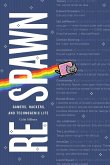New Media technologies such as social networking sites (SNSs) have taken the world by storm. Millions of people across the world are forming large social networks through these internet-based SNSs by sharing similar interests, friends, and personal information. New Media technologies now allow people to communicate messages to a greater audience through these networks not previously seen before in other technologies. This research seeks to understand these New Media users by examining the personality and social influence characteristics through the three phases of New Media acceptance: trial, adoption, and continual use.The study administered one-hour interviews to 64 university students concerning their experience with Facebook. Subjects were questioned on the three phases of New Media acceptance and completed personality surveys based on the Big Five traits and social influence characteristics. The research revealed that conscientiousness, susceptibility to interpersonal influence, and social desirability bias moderated the effects of peer influence and ease of use on the three phases of New Media acceptance. This work has been selected by scholars as being culturally important, and is part of the knowledge base of civilization as we know it. This work was reproduced from the original artifact, and remains as true to the original work as possible. Therefore, you will see the original copyright references, library stamps (as most of these works have been housed in our most important libraries around the world), and other notations in the work. This work is in the public domain in the United States of America, and possibly other nations. Within the United States, you may freely copy and distribute this work, as no entity (individual or corporate) has a copyright on the body of the work. As a reproduction of a historical artifact, this work may contain missing or blurred pages, poor pictures, errant marks, etc. Scholars believe, and we concur, that this work is important enough to be preserved, reproduced, and made generally available to the public. We appreciate your support of the preservation process, and thank you for being an important part of keeping this knowledge alive and relevant.
Bitte wählen Sie Ihr Anliegen aus.
Rechnungen
Retourenschein anfordern
Bestellstatus
Storno








